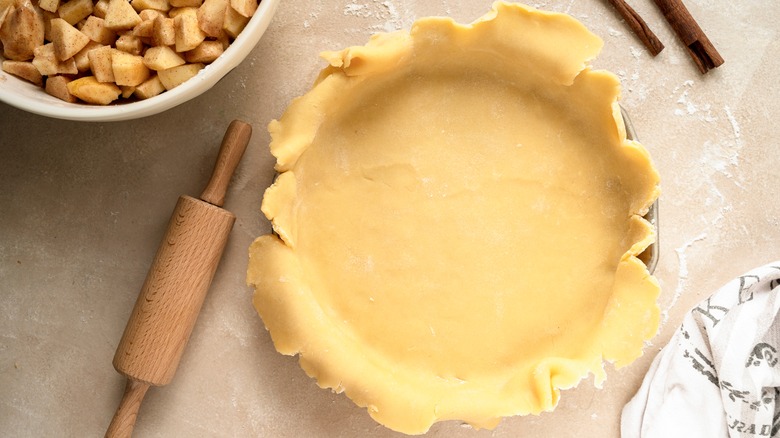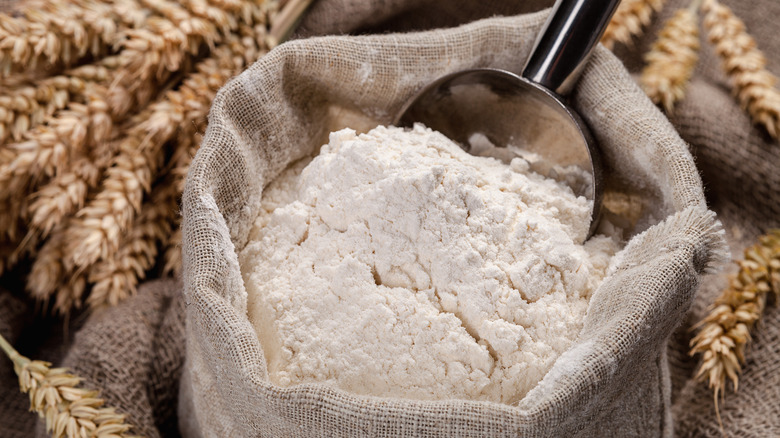The Magic Dust That's A Game-Changer For Your Pie Crust
Anyone who has watched an apple pie's crust fall apart as a slice is lifted from the pan — or has listened to Paul Hollywood's advice on "Great British Bake Off" — knows that the ultimate enemy of pies is a soggy bottom. A crisp, flaky pie crust is one of the baking world's greatest delights, which means few things are more disappointing than one that's been soaked through and become a doughy mess. Why did you go through all the trouble of mixing up a buttery dough, keeping it cool, and rolling it out perfectly if a wet filling is just going to overpower all your hard work? You could have just as easily made a cobbler and called it a day.
The fear of a soggy bottom has inspired a whole host of tricks to try to avoid pie's worst fate. According to The Kitchn, this can be as simple as blind baking your crust so that it crisps up a bit before a filling gets anywhere near it. You can also try lining the bottom of the crust with melted chocolate, which can form a protective barrier against moisture. Of course, neither chocolate nor blind baking is going to work with every pie recipe, but there is an even easier method you can use to up your pie crust game and avoid a soggy bottom. It just involves a very simple secret ingredient that you can throw together in a matter of seconds.
Crust dust will absorb extra moisture in your pie
Crust dust may not sound like the most appealing ingredient, but once you give it a try, it's likely to become an integral part of your pie-making. According to King Arthur Baking, crust dust is a fifty-fifty mixture of flour and granulated sugar used to soak up moisture on the bottom of your pie. Flour and sugar are both absorbent, so mixing them together and sprinkling them onto your pie crust creates a thin layer that will attract juices while the crust itself gets time to cook and set. You only need about two teaspoons to cover a standard pie, but you want to make sure it's evenly distributed and that no part of the bottom is showing through.
How much will crust dust actually help? Cook's Illustrated notes that if your recipe isn't that wet to begin with, it isn't going to make a huge change. But if your pie hasn't been engineered to avoid extra moisture — and let's be honest, that's most pies — then crust dust will make a noticeable difference.
If you don't want to add sugar, like if you're making a savory pot pie, then Food Network states breadcrumbs can work in much the same way as crust dust. Other thickeners, such as cornstarch, aren't ideal because they can create an unpleasant gelatinous texture instead of just absorbing the liquid. But with something as easy as crust dust, you won't need to worry about any other tricks.

